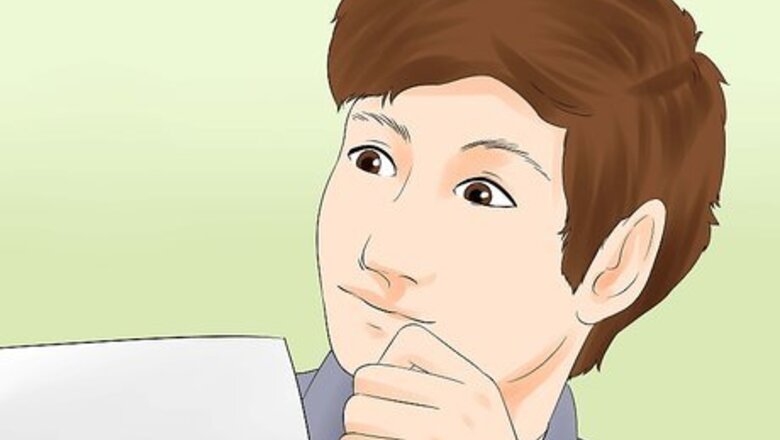
views
X
Trustworthy Source
Library of Congress
Official library of the U.S. and main research institution for Congress and the American public
Go to source
Steps

Understand the structures for all of Urdu’s sentences: SUBJECT, OBJECT, VERB (in English we use SUBJECT, VERB, OBJECT). Thus while in English you say "Jones [subject] sees [verb] Thomas [object]", the order of things in an Urdu sentence is "Jones [subject] Thomas [Object] sees [verb]."
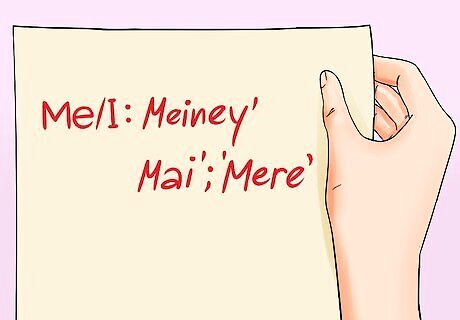
Know the main singular pronouns in Urdu. Me/I: Meiney';'Mai';'Mere' You: Tum'Tumhae';tumharae';'Tumnae';'Tumsae'; He/She/It/That: Vo;'Usnae';'Uskee';
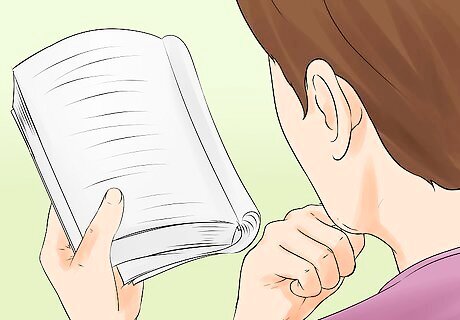
Know the main plural pronouns in Urdu. Each of these pronouns below has a plural equivalent, which is used when there are more than one of the things referred to by the pronouns, or also when the pronoun refers to someone you respect or who is of higher stature, or just to be polite or formal: We: Hum;'Humarae';'Humsae';'Humsab'; You (as in "you lot" - plural): Aap;'Aapsabh';'AapSabhee'; Them/Those: Vo;'Unhee';'Inhee';'Unko'; Plural pronouns are often used for singular subjects or objects to show respect like: You: "Aap" for 'Tum', "Aapko" for 'Tumhae', "Aapnae" for 'Tumnae', and "Aapsae" for 'Tumsae'; He/She:'Uhunnae" for 'Usnae' and "Unkee" for 'Uskee'
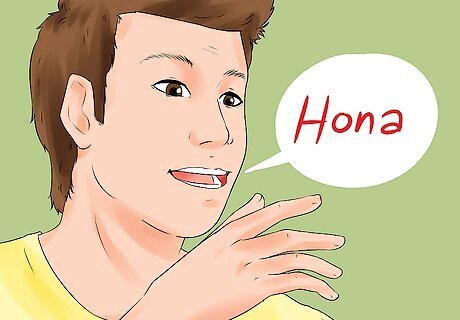
Learn how to say the verb "To Be" in Urdu. "To Be" has the following conjugations: To Be: Hona (infinitive) I am: Mein hoon You are: Tum ho S/he/it/that is: Vo hai Just to recap, "Mein hoon" means "I am" because "mein" means "I" and is the subject, "hoon" means "am" and is the verb, and the Urdu sentence order is Subject, Object (none in this case), Verb. We are: Hum hain You (pl) are: Aap hain They/those are: Vo hain Like English, the plurals all take the same conjugation.

Understand that all infinitives end with "na" - e.g. "Hona" - "To Be" - and "Dekhna" - "To See". Of the verbs that are regular, such as Dekhna (but not Hona), there is a simple rule for conjugating them in the present tense. This is to remove the "na" and add on the following instead. Note that in the first three cases, the underlined syllables are used only if the subject of the sentence is masculine (e.g. "John"). If the subject is feminine (e.g. "Jane") then those syllables are replaced by "i". I (Mein): ta You (Tum): te S/he/it (Vo): ta We (Hum): tain You (pl) (Aap): tain Them (Vo): tain Thus, as an example, the verb Dekhna (to see) would conjugate for me (I'm male) as "Dekhta" or for you (if you're female) as "Dekhti".
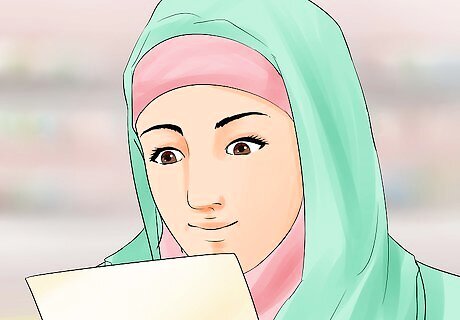
Understand that The verb "To Be" ("Hona") is the most important because it is used to create the present tense. Thus whereas in English we say "I see", in Urdu the translated equivalent would be "I am see" - or with the correct order, "I see am". Thus in Urdu, saying "I see" is like saying "I am, and see." Without the qualification that you are while you see, the verb of seeing would not be in the present tense. Thus: "I [female] see": "Mein dekhti hoon" "It sees": "Vo dekhta hai" You will recall that "mein" is "I", "hoon" is "am" (conjugated for "I") and "dekhti" is the verb "To See" ("Dekhna") when conjugated for a female "I".
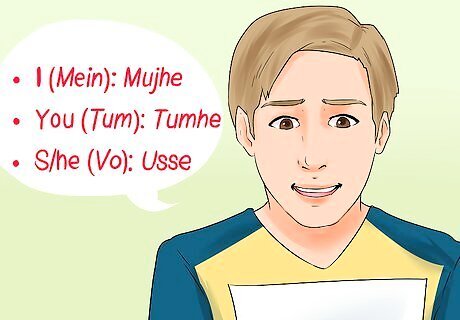
Understand when pronouns are used as objects, they are changed slightly to denote that something is being done to them rather than by them. When nouns are used as objects, they are appended by "ko" to show this change. e.g. "John" is fine as a subject, but "John ko" is the object. I (Mein): Mujhe You (Tum): Tumhe S/he (Vo): Usse We (Hum): Humhe You (pl) (Aap): Aapko Them (Vo): Unhe

Know how to Construct a sentence with an object. To say "I see John" in Urdu, we say something like "I John see am" - "I am, [present tense] and see John". "I see John": Mein John ko dekhta hoon "Jane sees John": Jane John ko dekhti hai To deconstruct: "Jane [subject] John ko [object] dekhti [sees, feminine] hai [present tense "is"]" "I see you": Mein tumhe dekhta hoon "You [feminine] see us": Tum humhe dekhti ho "They see Jane": Vo Jane ko dekhtain hain
Lessons
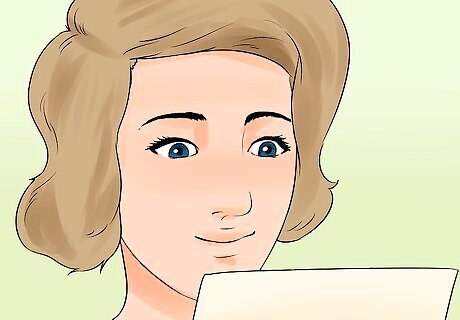
Sentence Formation-Declarative. Declarative sentences in the English language are the sentences that form a statement.
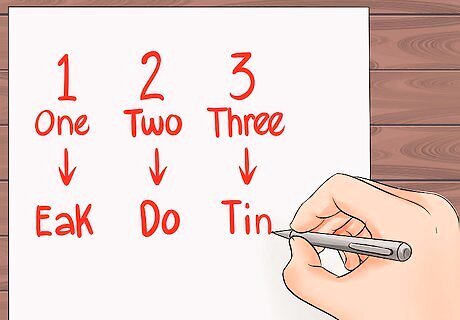
Let us build some vocabulary: Key words for Lesson 1. one eak two do three ti'n paper ka'g_haz dog kuta' pen qalam monkey bandar book kita'b this yeh that woh is ha~ye are ha~e(n)
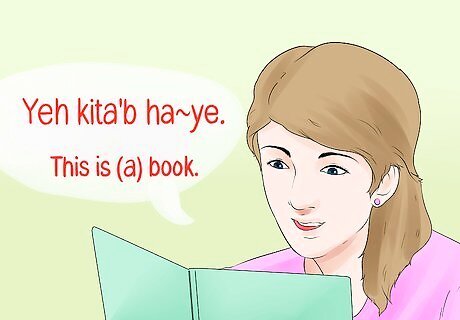
Verb to be ( am / is / are ) - the Present Simple Tense Eak do ti'n. One two three. Yeh kita'b ha~ye. This is (a) book. Yeh eak kita'b ha~ye. This is a book. Yeh ka'g_haz ha~ye. This is (a) paper. Yeh eak ka'g_haz ha~ye. This is a paper. Yeh qalam ha~ye. This is (a) pen. Yeh eak qalam ha~ye. This is a pen. Woh eak kita'b ha~ye. That is a book. Woh eak ka'g_haz ha~ye. That is a paper. Yeh bandar ha~ye. This is (a) monkey. Woh kuta' ha~ye. That is (a) dog.
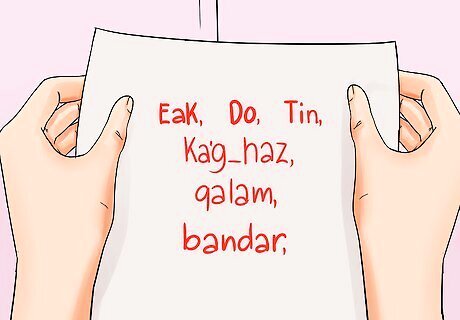
Composition of Sentences/Syntax eak, do, ti'n, ka'g_haz, ku-t-a, qalam , bandar, kita'b, yeh, , ha~ye, ha~e(n)

Let us build some vocabulary: Key words for Lesson 2. Four C_ha'r Seven Sa'th Ten Das Five Pa'nc_h Eight A't^h Six C_heh Nine Naw Greetings and Expressions Hello Hello (used esp. when answering the phone and in casual day to day greetings) A'da'b Arz ha~ye./ A'da'b. /Sala'm. / Namaste. / Namas_hka'r./ Hello / Assalam-o-alaikum /Ra'm - Ra'm How are you? A'p kaise ha~e(n) I am good/fine Mai(n) ac_ha hu(n) Goodbye K_huda-ha'fiz Good night S_hab-be-k_hair Have a good day A'p ka din ac_ha guzre Thank you S_hukriya You're welcome A'p ki meherba'ni Welcome k_hus_h a'mdi'd What's your name? A'p ka na'm ki~ya ha~ey My name is Azad Mera naam Aza'd ha~ye

Sentence Formation-Interrogative.Interrogative sentences in the English language are the sentences that form a question.
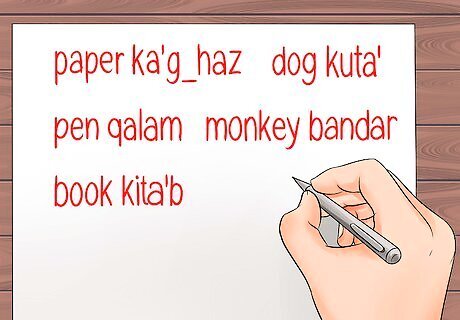
Let us build some vocabulary: Key words for Lesson 3. one eak two do three ti'n paper ka'g_haz dog kuta' pen qalam monkey bandar book kita'b this yeh that woh is ha~ye are ha~e(n) Kya yeh eak(do,teen.....) ha~ye. Is this one(two,three........)?. Kya yeh kita'b ha~ye. Is this (a) book? Kya yeh eak kita'b ha~ye. Is this a book? Kya yeh ka'g_haz ha~ye. Is this (a) paper? Kya yeh eak ka'g_haz ha~ye. Is this a paper? Kya yeh qalam ha~ye. Is this (a) pen? Kya yeh eak qalam ha~ye. Is this a pen? Kya woh eak kita'b ha~ye. Is that is a book? Kya woh eak ka'g_haz ha~ye. Is that a paper? Kya yeh bandar ha~ye. Is this (a) monkey? Kya woh kuta' ha~ye. Is that is (a) dog?
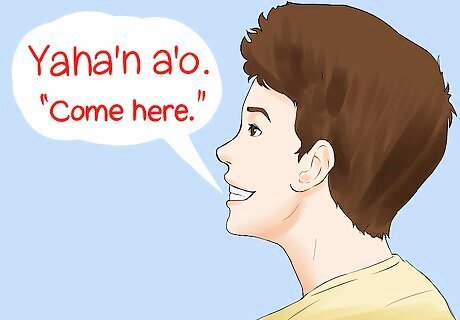
Sentence Formation- Imperative sentences.Imperative sentences in the English language are the sentences that make a command or request. Yaha'n a'o. Come here. Yaha'n jaldi a'o. Come here quickly. A'j wa'pas a'o. Come back today. A'j hi' wa'pas a'o. Come back today only. Wuh ka'm jaldi karo. Do that work quickly. Yeh ka'm jaldi karo. Do this work quickly. A'hista mat bolo Don't speak slowly. Zor se mat bolo. Don't speak loudly. A'j waha'n ja'o. Go there today. Ba'har baitho. Sit outside. Andar a'o. Come inside.

Sentence Formation- Exclamatory sentences.Exclamatory sentences in the English language are the sentences that attempt to powerful feelings, or emotions. Kya yeh eak(do,teen.....) ha~ye. Is this one(two,three........)?. Kya yeh kita'b ha~ye. Is this (a) book? Kya yeh eak kita'b ha~ye. Is this a book? Kya yeh ka'g_haz ha~ye. Is this (a) paper? Kya yeh eak ka'g_haz ha~ye. Is this a paper? Kya yeh qalam ha~ye. Is this (a) pen? Kya yeh eak qalam ha~ye. Is this a pen? Kya woh eak kita'b ha~ye. Is that is a book? Kya woh eak ka'g_haz ha~ye. Is that a paper? Kya yeh bandar ha~ye. Is this (a) monkey? Kya woh kuta' ha~ye. Is that is (a) dog?




















Comments
0 comment